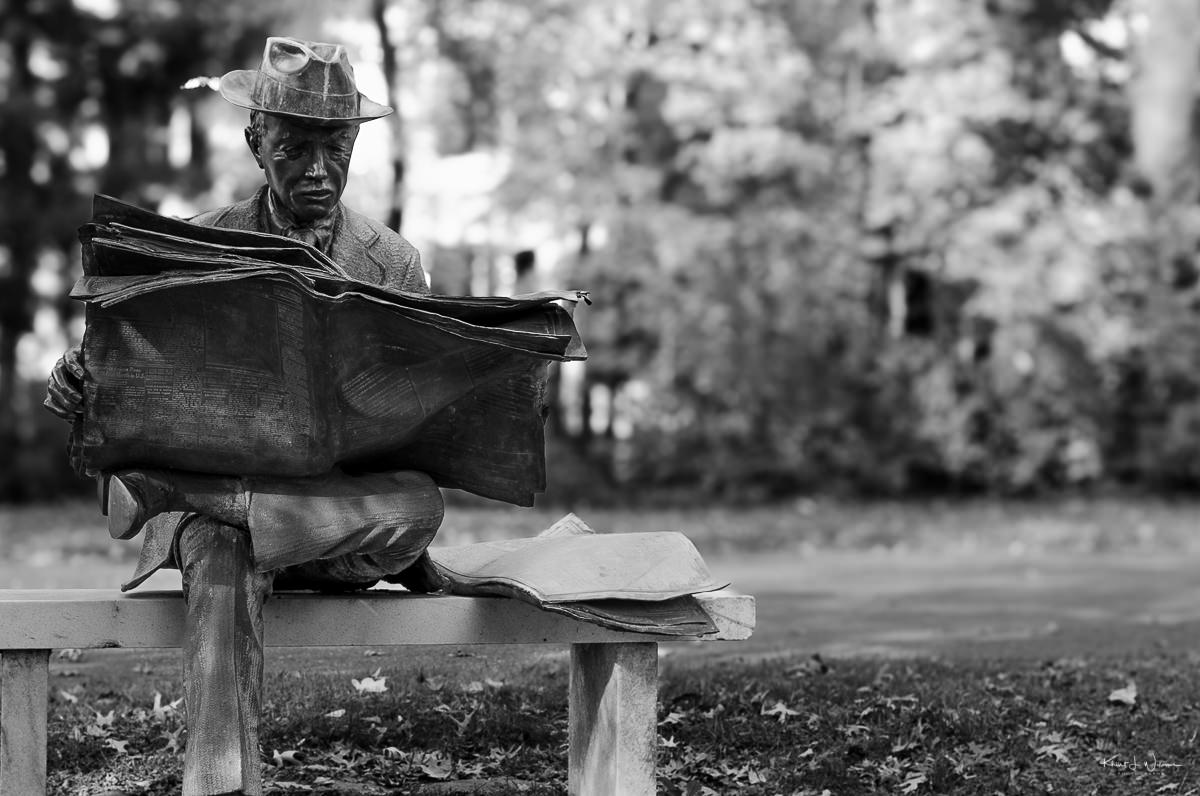I walked around from the northern end of the Princeton University campus to the southern end. I parked on Moore Street, crossed Nassau Street, and headed south toward Thomas Sweets.
I intended to do some street photography, but I lost my confidence. I walked through the parking lot toward Williams Street. I crossed Williams Street and walked the footpath back toward Scudder Plaza.
I saw the bike in one of the Julis Romo Rabinowitz Building entrances. I liked the look of the bike sitting in the dark with a bit of light coming through the pillars.
The Julis Romo Rabinowitz Building and the Louis A. Simpson International Building (formally 20 Washington Road) renovation project will repurpose the former Frick Chemistry Laboratory and combine academic and administrative areas dispersed across the University campus.
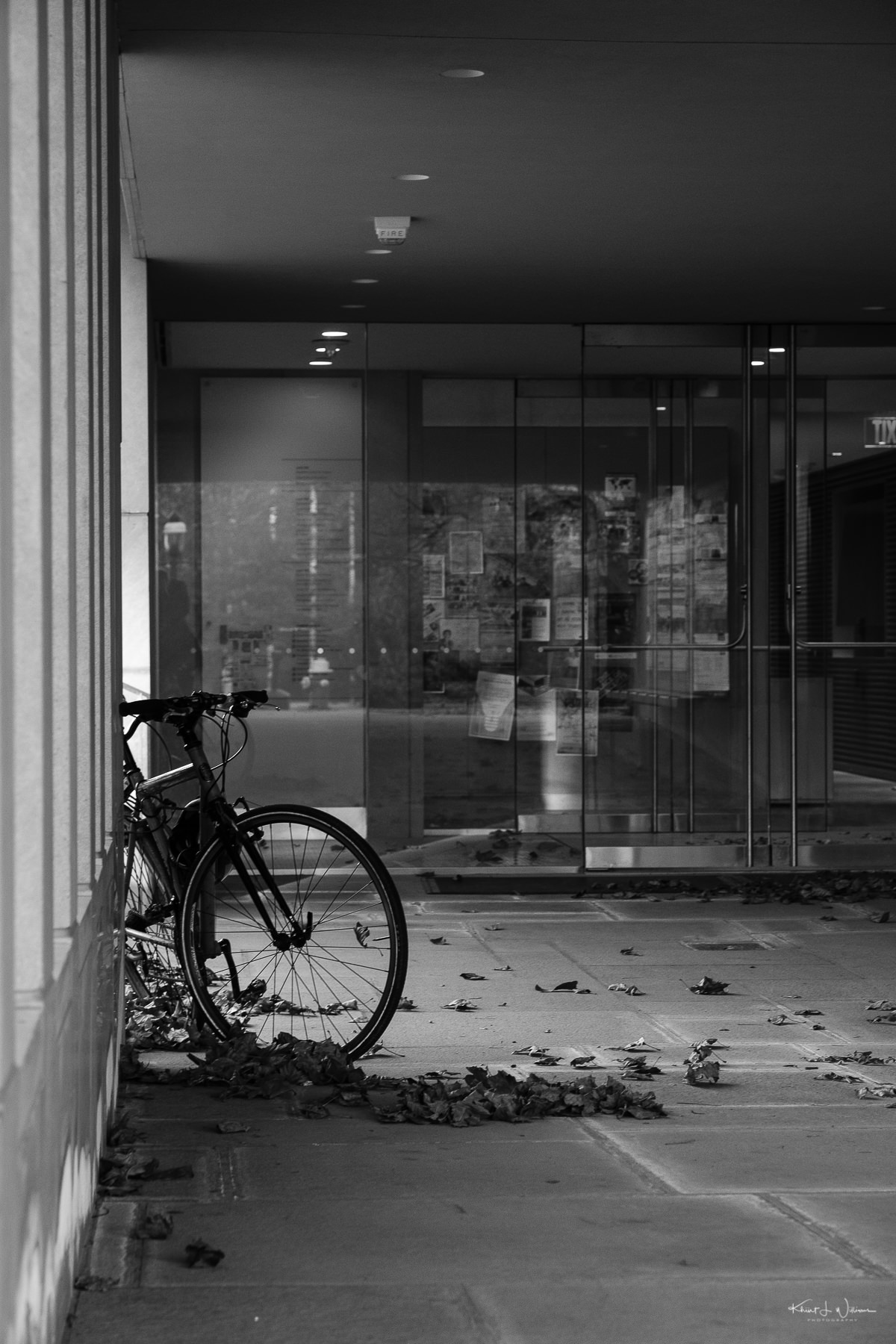
I continued across Scudder Plaza, stopping for fifteen minutes to talk to and photograph some skateboarders.
While I waited at the cross-walk, some visitors from the UAE asked me to take a photo of their family. I happily obliged. I continued across Washington Road with no particular goal in mind.
I saw this bicycle outside of what I think is 1879 Hall or Marx Hall. Many of the buildings on campus are joined by hallways, and it can be challenging to tell which is which.
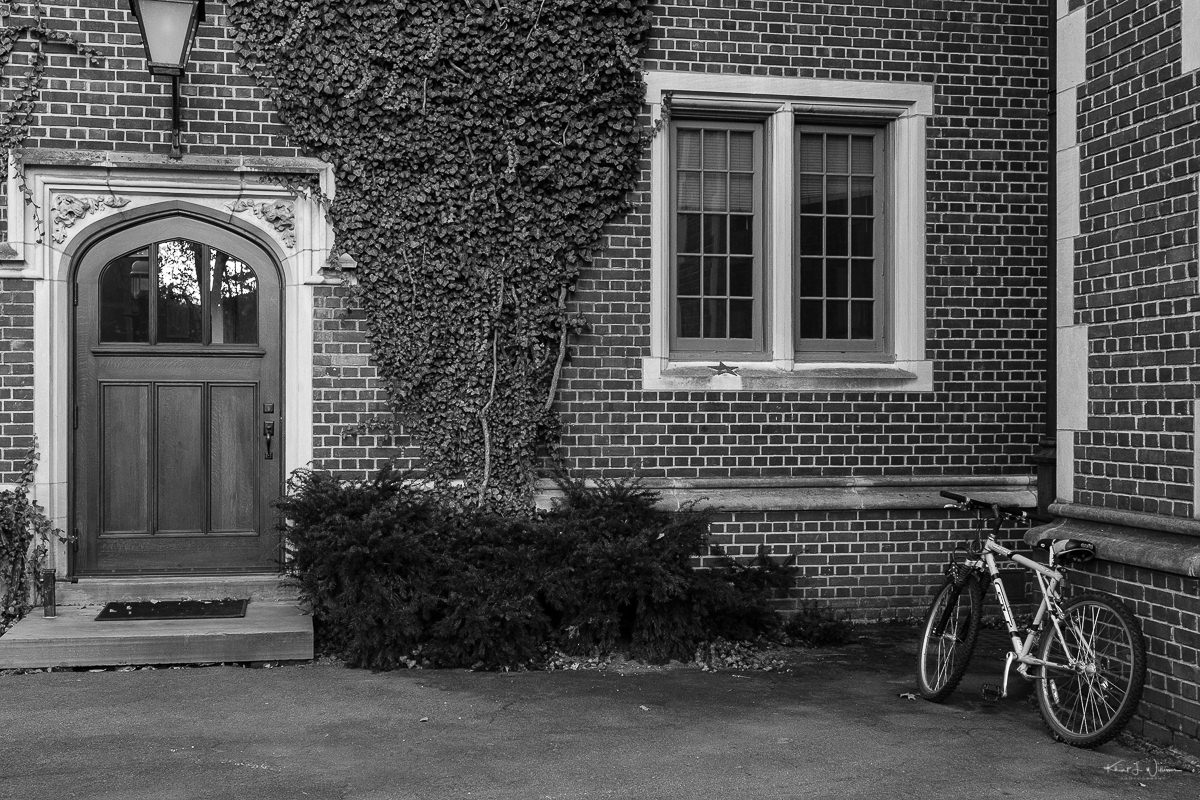
It was not until halfway through my walk that I realised I was taking photos of lonely bicycles. At this point, I decided I would continue my walk while keeping an eye out for bikes.
I continued across campus toward Nassau Hall. I crossed the diag and came upon Stanhope Hall. In all the years that I have walked across campus, this was my first time noticing this building.
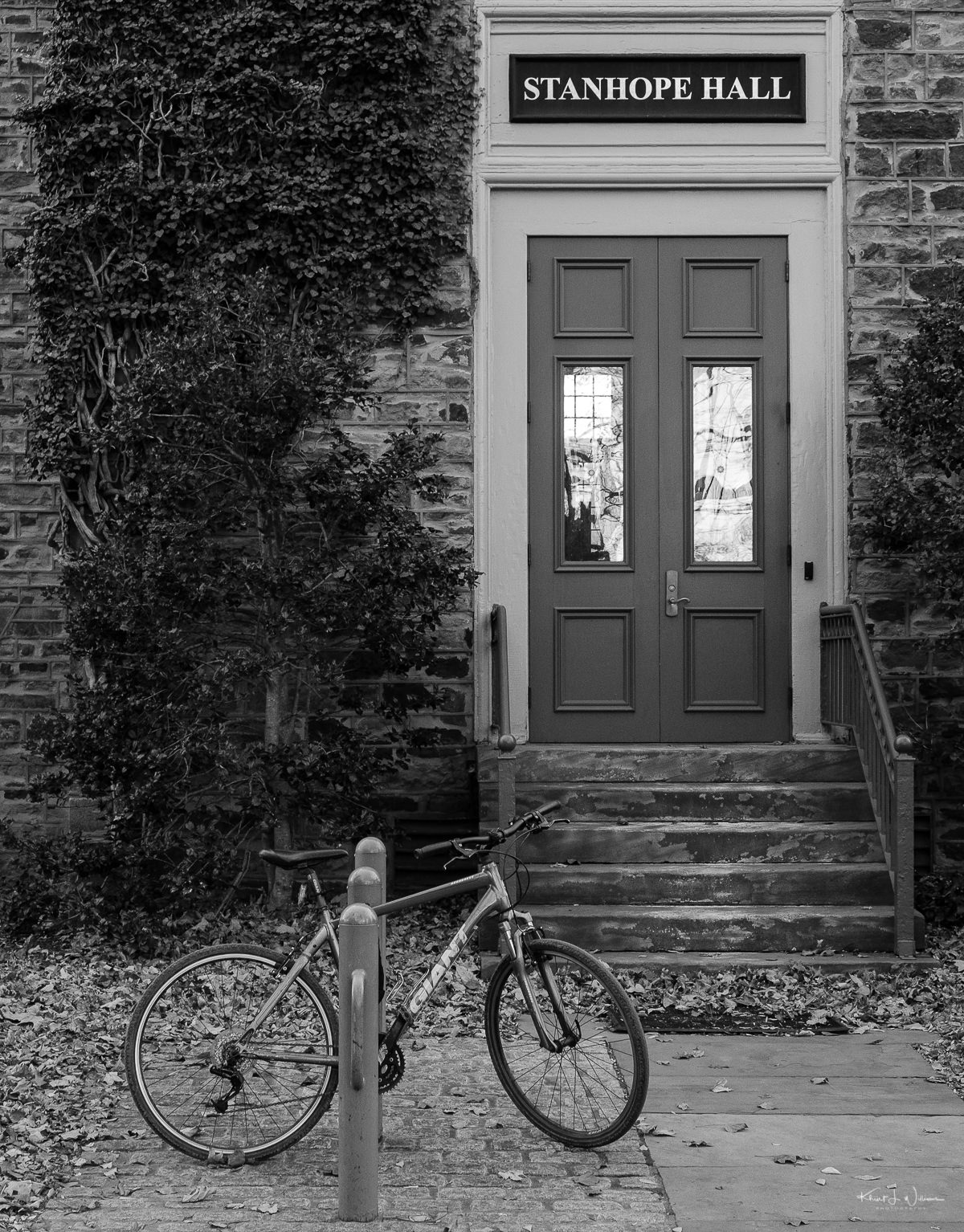
Stanhope Hall, the University’s third oldest building, was erected in 1803. It originally housed the college library, study halls, and the two literary societies, Whig and Clio, and was called the Library. Later it contained ~the
geological cabinetand lecture rooms and was known as Geological Hall. Still, later it held the offices of the treasurer and the superintendent of Grounds and Buildings and, for a time, the meeting room of the Faculty and was called the College Offices and then the University Offices. In 1915 the trustees gave it its present name in honour of Samuel Stanhope Smith, president when it was built. In recent years Stanhope has housed the University’s communications and security offices.

I walked around toward Blair Hall and found my way of walking through the arched corridors between the buildings of Rockefeller College.
The buildings of Rockefeller College include some of Princeton’s most beautiful landmarks. The dormitories are Holder Hall (completed in 1910), Witherspoon Hall (completed in 1877), a portion of Blair Hall (completed in 1897), and a portion of Campbell Hall (completed in 1909).
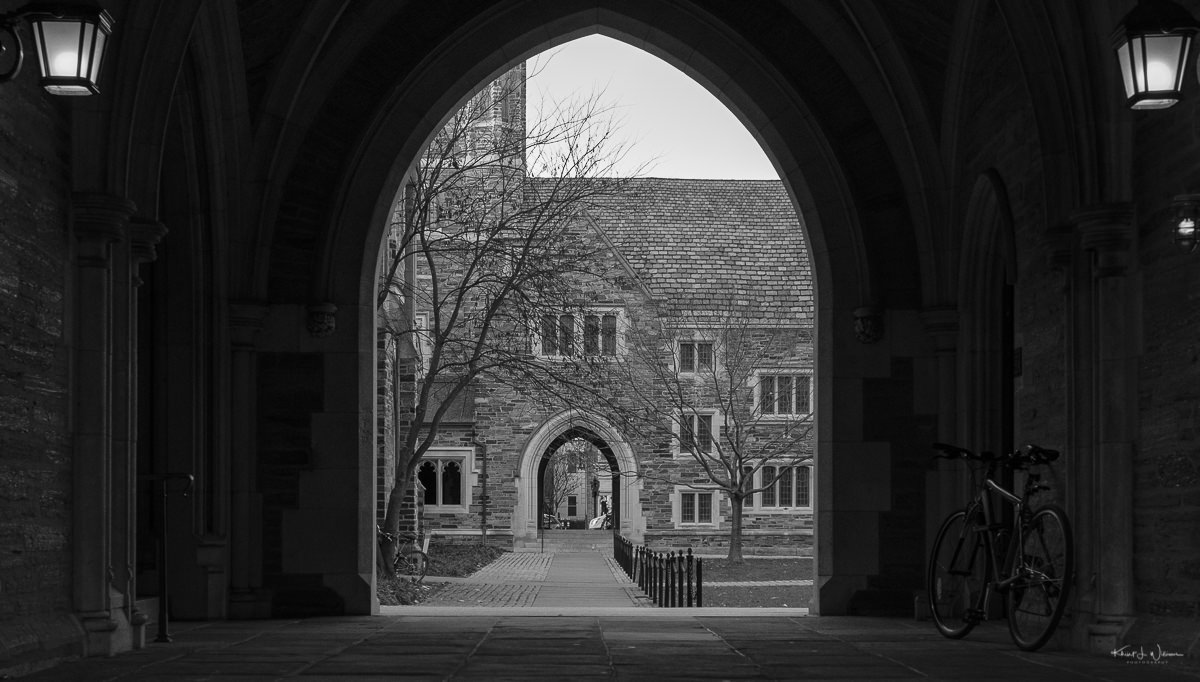
My fingers were almost frostbitten by this time. It was time to go home. I’ll give my thoughts on the street photography I captured that afternoon in a follow-up post.
